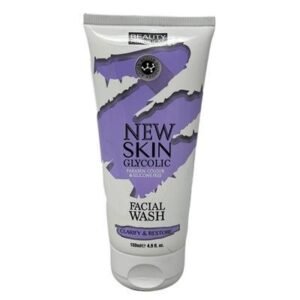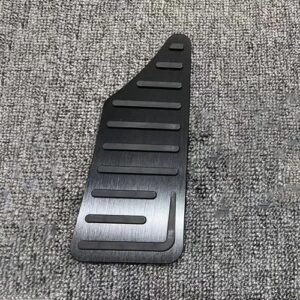Product detailsRegardless of the degree of modification, there are some basic principles that a vehicle must comply with in order to be licensed. One of the more important conditions is the size and weight of the vehicle. In addition, there are some regulations concerning details, such as according to [(Japan) Road Traffic Law] Article 55 Item 2, any modification shall not obstruct the driver’s vision and steering wheel operation, nor shall it interfere with the rearview mirror and exterior lighting system normal efficacy. When it comes to some more careful levels, there are corresponding principles. For example, when the camshaft is replaced, the engine will never be allowed to exceed the exhaust gas standard. Non-declarable modification The Japanese law lists more than 80 non-declarable modification parts, which are also collectively referred to as [designated parts]. They are roughly divided into two categories, accessories and parts related to drivability, and each category is subdivided into several groups (see Exhibit 2 for details). If the vehicle is simply refitted with [designated parts], does the refit violate the above-mentioned general principles (for example, the weight does not change significantly, and does not hinder the driving or endanger the driving performance of the vehicle) and the [security standard], the owner does not need to change the registration of the vehicle material. In order to prevent consumers from buying substandard parts, the [designated parts] sold in Japan must pass relevant tests before they are released to prove that the products meet the [security standards]. In this way, buyers only need to be sure that the product has a qualified label, and then they can buy with peace of mind, and they are not afraid of breaking the modification laws by changing the clothes.
-40%
Bumper DIY Strip Decoration Auto Protective Body Car Chrome
Sku:
GE779CA2GEVTNNAFAMZ
₦30,500.00 ₦50,800.00Save:₦20,300.00(40%)
Available in stock
Attention:
Prices on this site are constantly in review.
Orders are dispatched immediately upon payment confirmation.
Description
Reviews (0)
Ratings
0.0
0 Product Ratings
5
0
4
0
3
0
2
0
1
0
Review this product
Share your thoughts with other customers
Write a review
Be the first to review “Bumper DIY Strip Decoration Auto Protective Body Car Chrome” Cancel reply
You must be logged in to post a review.
Vendor Info
Vendor Information
- No ratings found yet!
More Products
- -2%
- -28%Sku: GE779TG4UP37INAFAMZ
Miboxer WL-Box1 2.4GHz Wifi Controller DC5V IOS Andriod
₦32,140.00₦44,877.00
Similar Products
- -41%Sku: GE779CA44CVQRNAFAMZ
Car Foot Pedal Pad For Honda Hr V Acessories Hrv Vezel Hev ~ Car Brake Clutch Pedal Pads Stainless Steel Acessories
₦49,704.00₦84,492.00 - -41%Sku: GE779CA3CJYKBNAFAMZ
Car Pedal For Volkswagen Golf 8 Acessories Vw Golf 7 Mk7 Mk8 Vw Id.3 Id.4 Id. 5 Id. 6 Stainless Steel Non-Slip No Drilling Pedal
₦47,592.00₦80,904.00 - -41%Sku: GE779CA4IBSOJNAFAMZ
Car Acessories Jdm Bubble Shift Knob Multi-Color Crystal Ball Car Shift Knob
₦33,408.00₦56,796.00 - -41%Sku: GE779CA3QBB4JNAFAMZ
Car Pedals For Mitsubishi Outlander Gn Gm Zm 2024 2025 Foot Pads Car-Stylings Covers Rest Brake Pedals Car Acessories
₦44,688.00₦75,972.00 - -41%Sku: GE779CA40IBBFNAFAMZ
Car Foot Pedal For Lexus Gs L10 ~ Car Pedal Non Slip Accelerator Gas Brake Foot Rest Pedal Covers Acessories
₦56,256.00₦95,640.00 - -41%Sku: GE779CA4WK87NNAFAMZ
Car Foot Pedal Pads Covers For Kia Sportage Acessories Nq5 Car Non Slip Performance Gas Brake Pedal Pad Acessories
₦48,960.00₦83,232.00 - -41%Sku: GE779CA400Z37NAFAMZ
At Mt Car Foot Pedal Pad Cover For Renault Austral Acessories Car Brake Clutch Pedal Pads Non Slip Covers Acessories
₦45,888.00₦78,012.00 - -24%
- -60%
- -6%Sku: GE779EA41V0WONAFAMZ
Lexus RX330 RX350 RX400H (2003-2009) / Toyota Harrier (2003-2009) Car Android GPS Navigation Radio System
₦95,000.00₦101,000.00
[wcboost_compare_button][wcboost_wishlist_button]
Share this item

















 No products in the cart.
No products in the cart.
Reviews
There are no reviews yet.